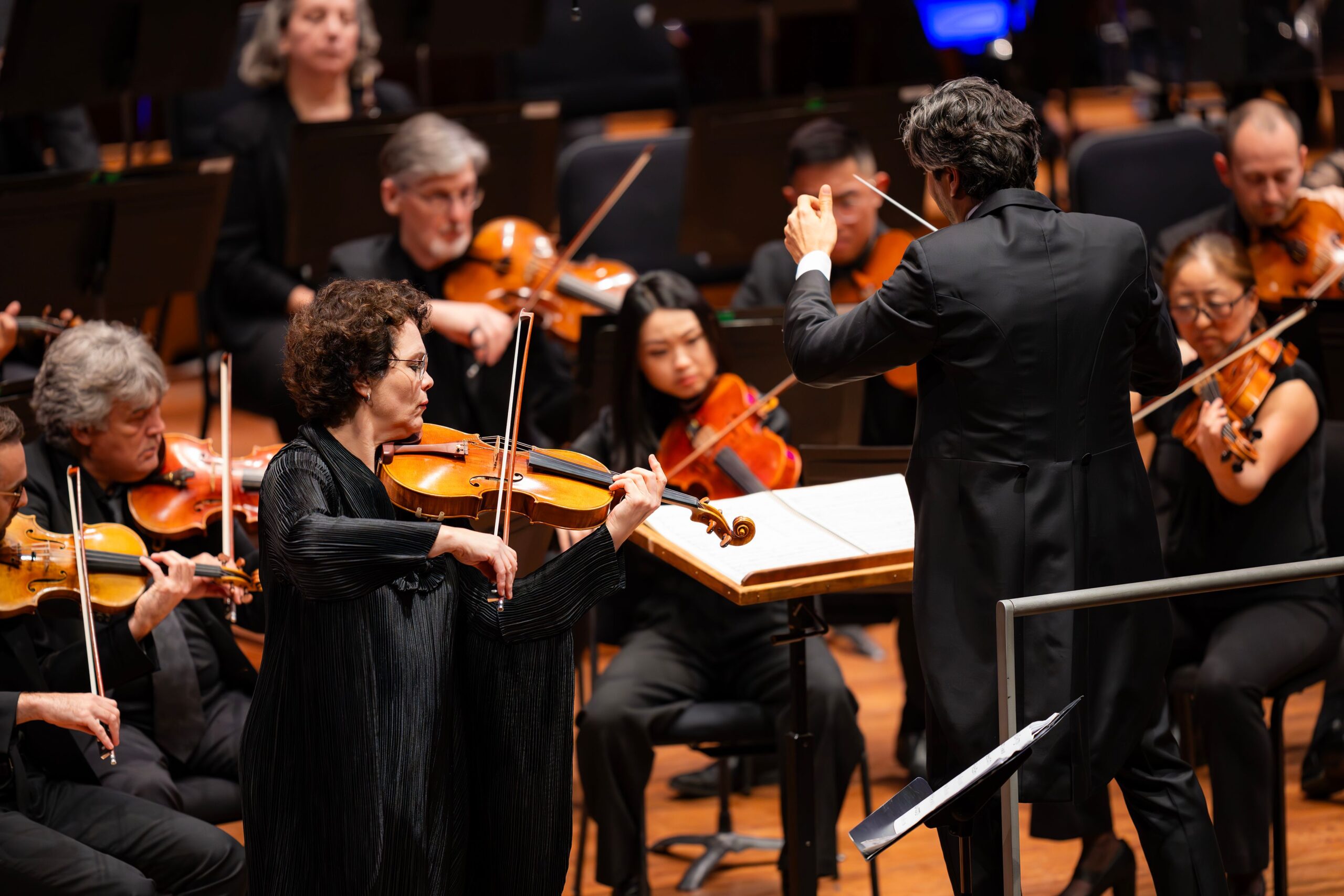Who would have thought that two works left unfinished at the time of their composers’ deaths and that took years to arrive at the concert stage, would overshadow more familiar orchestral fare? But that was the result of the Seattle Symphony’s concert on November 9 where Claude Debussy’s much loved and oft-played La mer was swamped by compositions by Béla Bartók, Olivier Messiaen, and Lili Boulanger. Of those three works it was Bartok’s technically demanding Viola Concerto that provided the stunning, unforgettable performance of the evening.
The Bartók concerto, tucked in before the intermission, stood out like a rugged Hungarian island in the middle of a misty French sea. Sketched out by Bartók while he was dying of leukemia and left unfinished as a skeletal manuscript at his death in 1945, his Concerto for Viola and Orchestra has always been full of editorial and technical challenges. It was composed for famed violist William Primrose and filled out and completed by the composer’s student Tibor Serly.
What resulted with this reconstruction is a dense, complex work that utilized the tonal palette of the viola to its limits. The score follows the tradition of musical call-and-response between soloist and orchestra. It also creates the same effect on the instrument itself through contrasting shifts of registers, an inner dialogue of sorts that the vast range and timbres of the viola makes possible.
The soloist, Tabea Zimmermann, was dazzling here, at once sweet and elegiac in the upper registers and then dropping to a resonant, defiant growl on the lower strings. She deftly handled complex rhythms and daring string harmonics with exciting confidence, and perfectly judged the transitions with the orchestra. Zimmermann was ably supported by David Afkham, whose conducting technique was concise and precise, a refreshing contrast to the distracting gyrations favored by many conductors today. Afkham kept Bartok’s harmonies and orchestral textures keen and taut, maintaining an edginess without exaggeration.
Afkam’s assertive way with the Bartók did not transfer well to the French works that dominated the bulk of the program. In Messiaen’s meditation on Jesus’ sufferings and spiritual grace, Les offrandes oubliées (Forgotten Offerings), which opened the concert, Afkam was most successful in the central section where the brutality of sin manifests itself in darting themes, ferocious harmonies, and sharp percussive accents. But the quieter framing passages lacked meditative warmth. The final chamber-like string writing sounded a bit too clinical and cool, just missing the contemplative awe that is essential in Messiaen’s plainchant-like serenity.
Afkam seemed more at home with Debussy’s symphonic sketches La mer where the shifts from playfulness and turbulence need a steadier hand. Fine solo flourishes abounded with Stefan Farkas’ English horn capturing beautifully the sweet mournful cries of awakening seabirds, echoed by David Gordon’s thrillingly precise, muted trumpet. Demarre McGill’s flute wafted serenely above the pulsating strings.
Still, full ensemble passages displayed weakness at times. Divisi string passages did not always sound in sync and the combined brass too often overpowered the winds. There was sound and fury in climaxes, but a little rawness as well, a quality not always suited to Debussy’s refined style.
The finest example of early 20th century French style in this program came from Lili Boulanger’s short symphonic poem D’un soir triste (Of a Sad Evening). Like the Bartók concerto, this was the composer’s last composition, a final orchestral testament before her tragic death from tuberculosis. Although later overshadowed by her elder sister, the famed music pedagogue Nadia, Lili was a genius in her own right with a wide catalogue of imaginative works that are impressive for one who lived a mere 24 years.
Her D’un soir triste (likely edited posthumously by Nadia) is an arching dirge, a beautiful evocation of sorrow from one facing mortality at so young an age. Yet, in spite of its dark subject, it is a shimmering score where the trudge and undulations of a dense and divided string section are relieved by evocative instrumental countermelodies. Most memorable was the haunting passage that set the lamenting strains of a high-lying cello solo, delicately phrased by Efe Baltacigil, against the eerie percussive glitter of Christina Siemens’ celeste.
Here Afkam’s striving for clarity and reserve was put to its best use, keeping the emotional despair at a comforting distance while delivering a powerful performance. The performance proved its composer to be the equal of her better-known compatriots.
Discover more from Post Alley
Subscribe to get the latest posts sent to your email.

Thank you Theodore. We attended the same performance, and it was a fine concert indeed. We were particularly taken with Tabea Zimmermann’s encore piece, which was splendid but unfamiliar. We asked a few symphony folk but never got a definitive answer. Can you identify it?
Zimmermann’s encore was “Capriccio for solo viola” by Henri Vieuxtemps. He wrote it as an homage to his friend the virtuoso violinist Paganini. It is a favorite, much-played encore number for violists. Indeed, when Zimmermann returned to stage for her encore I remember thinking to myself, “I bet she’ll bring out the ol’ Vieuxtemps for another run.” It is a fun work and she performed it exceptionally well.
I believe that her encore was Paul Hindemith’s – Sonata for Viola Solo op. 25 No. 1, specifically Mov. IV. As a violist myself I was fascinated by her performance of it and spent some time searching for the piece.
Hello Hannah. The encore at the performance I attended was indeed Henri Vieuxtemps’ ‘Capriccio’, confirmed by both a violist colleague (and string teacher) who attended the same concert and by the Seattle Symphony’s PR staff itself. Perhaps Zimmermann played the Hindemith as the encore at the other performance? The Hindemith is indeed a demanding, fascinating piece and worth seeking out (as are all of his works). All the best.